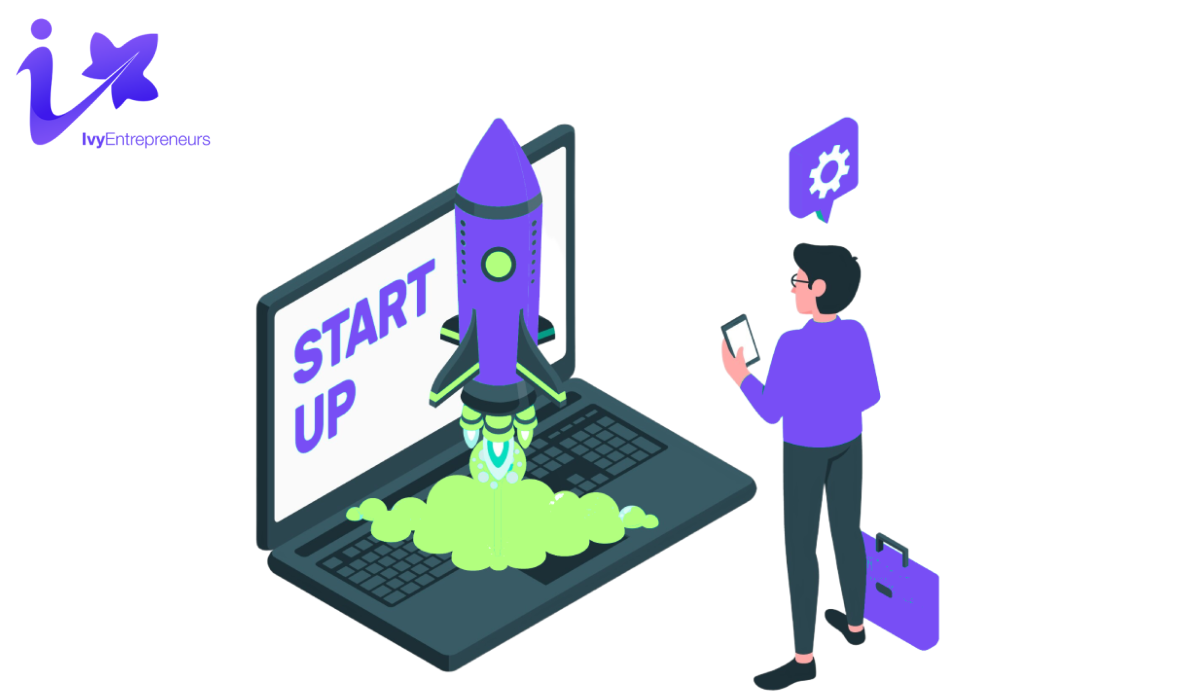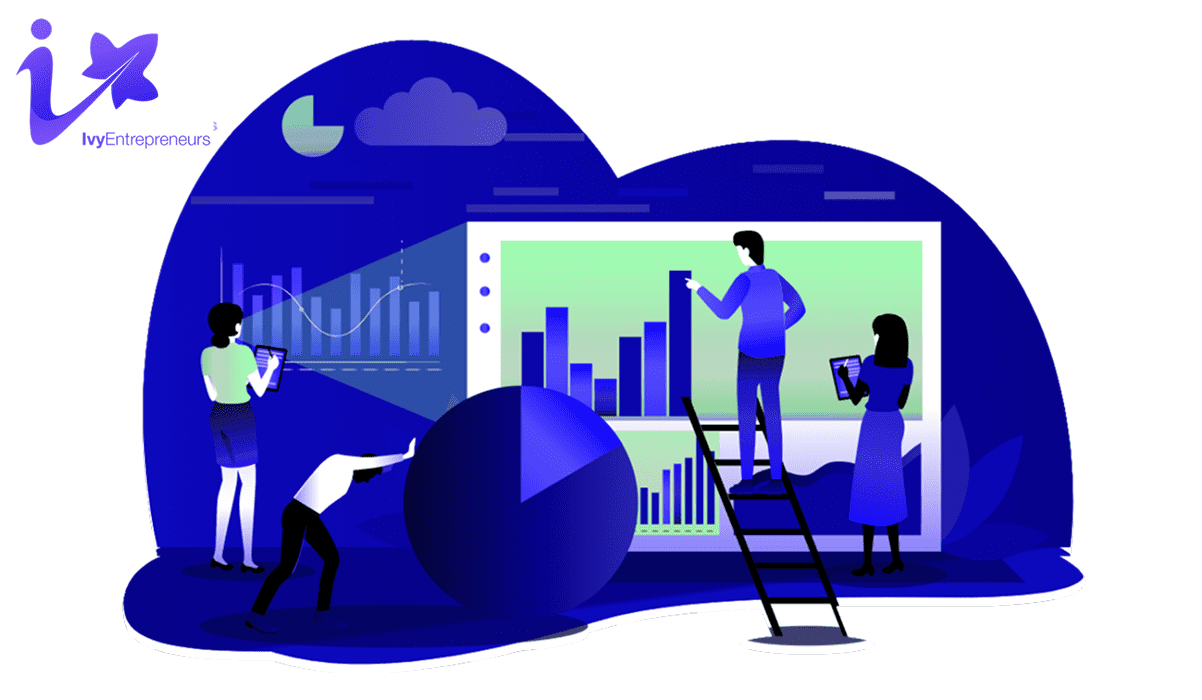Mastering Startup Success: Unlocking the Power of a MVP and the Lean Startup Method

Discover the keys to unlock the startup world with this step by step overview and learn how the Minimum Viable Product (MVP) and the Lean Startup Method, can help. Also, explore how an online entrepreneurship program can accelerate your journey towards building a successful business.
What is a MVP and the Lean Startup Method?
As Eric Reis eloquently puts it, “The goal of a startup is to figure out the right thing to build—the thing customers want and will pay for—as quickly as possible.” And a Minimum Viable Product (MVP) does just that! And this is what all early stage entrepreneurs should be focused on, not exits or unicorns.
A MVP represents the core essence of your product or service, distilled down to its most essential features. It serves as a testing ground to validate assumptions and gather valuable feedback from early adopters. The concept of an MVP is rooted in the philosophy of avoiding lengthy development cycles and delivering value to customers at the earliest opportunity and with the lowest costs to the startup.
The Lean Startup Method provides a systematic approach to building and iterating on your startup idea through continuous experimentation and learning. It emphasizes the importance of validated learning, rapid iteration, and feedback loops to guide decision-making. This approach allows entrepreneurs to minimize waste, reduce the risks associated with uncertainty, and increase the likelihood of building a successful and sustainable business. In the early days of a startup, almost all businesses face a shortage of “TMT” resources (time, money and team) and the MVP/Lean approach help you work around these constraints.
To better understand the MVP concept, imagine you are an aspiring chef preparing to open a new restaurant. Instead of investing substantial resources in creating an extensive menu with all the culinary delights imaginable, you decide to start with a smaller, focused menu featuring a few carefully crafted dishes. These dishes represent the essence of your culinary vision and allow you to gauge customer preferences and feedback.
Similarly, in the startup world, a MVP is like that tantalizing appetizer—a scaled-down version of your product or service that captures its core value proposition. By offering a simplified version of your solution, you can test its viability in the market, gather insights, and validate assumptions.
The Lean Startup Method guides the development of your MVP by encouraging a hypothesis-driven approach. You start by identifying your riskiest assumptions and crafting hypotheses around them. These assumptions might revolve around customer needs, product-market fit, pricing, or distribution channels. By formulating these into falsifiable hypotheses, you can then design experiments to test and validate them.
The iterative nature of the Lean Startup Method ensures that you learn from each experiment and adapt your strategy accordingly. This agility allows you to pivot if necessary, changing course based on real-world feedback and market dynamics and prevents you from going down a costly path where there is no demand.
The MVP and the Lean Startup Method provide entrepreneurs with a framework for navigating the uncertain waters of the startup landscape and reducing risk. By distilling your idea into its most essential form and validating assumptions through rapid experimentation, you increase your chances of building a successful business by reducing your burn rate and thus lengthening your runway. This approach encourages a mindset of continuous learning, adaptation, and customer-centricity, leading you down the path to entrepreneurial success.
Defining your MVP using Lean Startup principles
Defining your MVP involves a careful analysis of your target market and understanding their needs and pain points. The Lean Startup Method encourages you to adopt a customer-centric approach by deeply empathizing with your target audience. By gaining insights into their preferences, behaviors, and challenges, you can create an MVP that resonates with them and addresses their most pressing needs and/or solving a problem for them.
To define your MVP effectively, it’s crucial to identify the riskiest assumptions underlying your business idea. These assumptions can range from market demand and customer behavior to the value proposition of your product or service or even pricing strategies. By identifying the highest-risk assumptions, you can prioritize your efforts and allocate resources accordingly.
Once you have identified the riskiest assumptions, the next step is to craft hypotheses around them. Hypotheses are educated guesses about the market, customers, and your solution. They serve as the foundation for your experiments and validation process. For example, if your riskiest assumption is that customers will pay for a premium version of your software/app, your hypothesis could be: “Customers are willing to pay X amount for additional features and enhanced functionality.”
With your hypotheses in place, you can design experiments to test them. These experiments can take various forms, such as landing pages, surveys, mockups, or prototypes. The goal is to gather data and insights that will either validate or invalidate your hypotheses. For instance, you could create a landing page that highlights the premium features of your software and track the number of sign-ups or conversions to gauge customer interest.
During the validation process, it’s important to maintain a mindset of learning and adaptation. The Lean Startup Method encourages you to embrace failure as a learning opportunity. If your hypotheses are invalidated, it’s not a setback but rather a chance to iterate and refine your ideas. By constantly learning from customer feedback and data, you can make informed decisions about your MVP and refine it to better meet the needs of your target market.
When defining your MVP, remember that simplicity and focus are key. Avoid the temptation to include every possible feature or cater to a broad audience. By narrowing down your MVP to the core features that provide the most value and solve the most critical problems, you increase its chances of success. As Eric Reis wisely said, “The most important lessons are learned by getting the minimal product out of the building and into the hands of customers as early as possible.”
Defining your MVP using Lean Startup principles is a strategic and iterative process that focuses on delivering value to your target audience. By empathizing with your customers, identifying the riskiest assumptions, formulating hypotheses, and conducting experiments, you can validate your ideas and refine your MVP. This approach allows you to build a solid foundation for your startup, align your product with customer needs, and increase your chances of long-term success.
Building Your MVP: Blueprint for Triumph
Just as an architect meticulously plans and designs before the construction starts, you must embark on a strategic journey to construct your MVP. You could use a Lean Canvas, akin to architectural blueprints, serves as the guiding framework. At Ivy Entrepreneurs we have other tools that we utilize.
Building your MVP is a delicate balance of resource allocation and speed. It’s important to understand that your MVP is not intended to be a perfect, fully-featured product but rather a functional representation of your value proposition. The goal is to get it into the hands of early adopters as quickly as possible to gather feedback and iterate based on their insights.
Start by identifying the core features and functionalities that align with your value proposition. These are the essential components that directly address the pain points of your target audience. Remember, less is more. By focusing on the key features, you can streamline development efforts and maintain a laser-like focus on delivering value.
As you build your MVP, remember that speed and efficiency are key. Lean Startup principles encourage you to prioritize speed over perfection. It’s better to have a functional MVP in the hands of early adopters quickly than to spend months or years perfecting a product that may not meet their needs. By embracing this mindset, you can gather valuable feedback early on and iterate based on real-world data.
Testing Your MVP: A Path to Validation
Congratulations! You’ve built your MVP. But the journey doesn’t end here—now it’s time to embark on testing and validation. As Eric Reis wisely stated, “The only way to win is to learn faster than anyone else.”
Testing your MVP is a critical step in the Lean Startup Methodology. It allows you to validate your assumptions, gather feedback from real users, and make data-driven decisions to refine and enhance your product. Remember, the goal is not to prove your ideas right, but rather to discover what works and what doesn’t, so you can iterate and improve.
One of the most effective ways to test your MVP is through early customer engagement. Identify your target market and reach out to potential customers who align with your ideal user persona.
It’s important to remain open-minded and receptive to feedback during the testing phase. Constructive criticism can be invaluable in uncovering blind spots and identifying areas for improvement. Embrace feedback as an opportunity to learn, adapt, and pivot if necessary. Remember, it’s far better to uncover flaws and make adjustments early on than to discover them after a full-scale launch.
Testing your MVP is not a one-time event but an ongoing process. Eric Reis wisely said, “In a startup, no facts exist inside the building, only opinions.” Ivy Entrepreneurs advocates the “Build-Measure-Learn” feedback loop, which enables you to pivot when necessary.
Embarking on the entrepreneurship journey can be daunting and have risks, but you do not have to undertake it alone. Online entrepreneurship programs, such as Ivy Entrepreneurs, provide knowledge, mentorship, and resources to support your MVP development and startup launch. And if your idea and MVP are strong enough, startup funding, in the form of an early stage seed investment. Through our specialized courses and mentor guidance, you’ll gain the skills and confidence needed to navigate the entrepreneurial landscape and transform your dreams into reality.
MOST RECENT ARTICLES
How to Win Student Entrepreneurship Competitions
Entrepreneurship competitions are an amazing opportunity for aspiring entrepreneurs to…
View ContentThe Role of Mentorship in Student Entrepreneurship
How to Get a Mentor and The Role of Mentorship…
View ContentUnlocking Entrepreneurial Success: A Guide to Launching Your Business during OPT at Ivy E Labs Accelerator
Discover the transformative journey from idea to launch as an…
View ContentUnlocking Success: Navigating OPT Job Search Challenges Through Entrepreneurship Education and Business Launch
In this detailed exploration, we unveil the challenges faced by…
View Content



